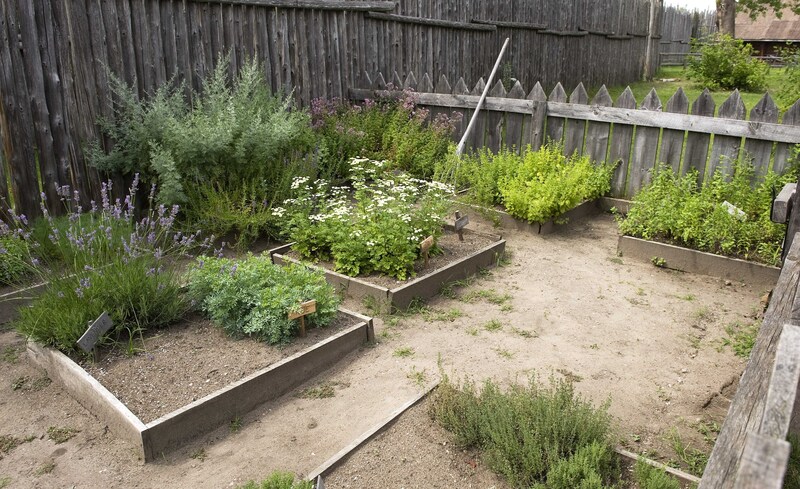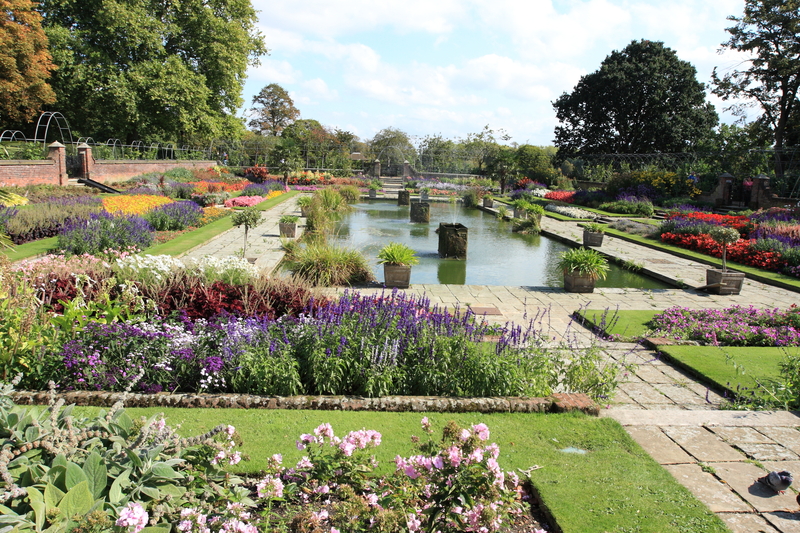Eco-Friendly Privacy Solutions Through Sustainable Planting
Eco-friendly privacy solutions have become increasingly popular as homeowners, businesses, and communities seek ways to balance privacy, aesthetics, and environmental responsibility. One of the most effective and sustainable approaches is sustainable planting. By leveraging living barriers instead of traditional fencing, you can enjoy privacy while positively impacting the environment. This comprehensive guide explores the best sustainable and eco-friendly planting solutions to create your own green privacy sanctuary.

Why Choose Eco-Friendly Privacy Options?
Choosing eco-friendly privacy solutions offers a myriad of benefits. Not only do you secure your property and enhance your personal space, but you also contribute to biodiversity, combat climate change, and improve air quality. Below are several advantages of embracing natural privacy barriers:
- Environmental Impact: Living walls and hedges absorb carbon dioxide, produce oxygen, and support native wildlife.
- Long-Term Value: Sustainable planting grows and improves over years, providing lasting privacy and beauty.
- Aesthetic Appeal: Plants introduce color, texture, and seasonal interest, enhancing your landscaping.
- Noise Reduction: Dense foliage dampens noise more effectively than solid walls or fences.
- Cost-Effectiveness: While some initial investment is required, perennial plants often require less maintenance and lower replacement costs.
- Soil and Water Benefits: Root systems reduce soil erosion and support water retention in the landscape.
Understanding Sustainable Planting for Privacy
Sustainable planting for privacy refers to the thoughtful selection and arrangement of plants that function as natural barriers without depleting limited resources or causing long-term ecological damage. This involves choosing the right plant species, considering local ecology, and ensuring the design minimizes environmental impact.
The Principles of Sustainable Planting
- Native and Drought-Tolerant Species: Prioritize species adapted to your local climate for resilience and easy maintenance.
- Diversity: Plant a mix of species to support pollinators, reduce pest outbreaks, and prevent disease.
- Reduced Inputs: Opt for plants that need minimal fertilizer and water.
- Wildlife Support: Select varieties that provide food and shelter for birds, bees, and other beneficial creatures.
- Longevity: Invest in perennial plants and slow-growing shrubs that offer continuous privacy.
Types of Eco-Friendly Privacy Plantings
Not all green privacy barriers are the same! Explore these popular eco-friendly privacy solutions through sustainable planting:
1. Living Fences
A living fence or green fence is created by planting shrubs, trees, or even grasses closely together to form a dense screen. Over time, the living fence becomes impenetrable, offering privacy and wind protection while promoting local biodiversity.
- Popular options: Privet, boxwood, yew, holly, viburnum, hornbeam
- Best for: Formal gardens, property boundaries, long-term solutions
- Tip: Choose evergreen varieties for year-round screening
2. Hedges for Privacy
A hedge is a versatile sustainable planting for privacy that provides various heights and densities. Hedges can be trimmed for a neat appearance or allowed to grow wild for a natural look.
- Popular options: Laurel, photinia, hazel, beech, hawthorn, arborvitae
- Advantages: Customizable shape and height, supports wildlife, reduces wind and noise
- Reminder: Mixed hedging provides better ecological value than a monoculture hedge
3. Privacy Trees
Tall trees provide quick and impressive visual screening. Grouping trees strategically along property lines creates a lush, green wall that's both effective and beautiful.
- Popular options: Leyland cypress, Thuja Green Giant, Eastern redcedar, hornbeam, Italian cypress, bamboo (clumping, non-invasive types only), serviceberry
- Suitability: Larger properties, areas requiring vertical privacy, buffering unsightly views or noise
- Note: Always check for non-invasive species before planting
4. Vertical Gardens and Green Walls
A modern take on sustainable privacy screens includes vertical gardens and living walls. These structures support climbing plants or stacked plantings and can be mounted on fences or walls to enhance green coverage.
- Popular options: Ivy, star jasmine, clematis, honeysuckle, Virginia creeper, climbing hydrangea, wisteria
- Applications: Urban areas, small courtyards, patios, balconies
- Extra: Perfect for compact spaces where traditional hedges or trees aren't feasible
5. Eco-Friendly Privacy Screens with Ornamental Grasses
Fast-growing, tall ornamental grasses are an excellent eco-friendly privacy alternative. They create a gently swaying, seasonal screen and are highly tolerant to drought or poor soil.
- Popular options: Miscanthus, pampas grass, switchgrass, fountain grass, feather reed grass
- Benefits: Great wildlife habitat, quick growth, minimal water needs
- Advice: Cut back once annually to encourage fresh spring growth
6. Mixed Natural Screens
Combining trees, shrubs, hedges, and grasses maximizes ecological benefit and ensures coverage at all levels--ground, mid, and canopy. This approach is wonderful for supporting pollinators and creating a layered, wildlife-friendly privacy hedge.
Planning a Sustainable Privacy Garden
Designing an eco-friendly privacy solution through sustainable planting requires careful planning and consideration. Follow these essential steps:
Step 1: Assess Your Site
Understand your existing soil, sunlight, and moisture conditions. Identify wind patterns, views you want to block, and areas that need more privacy.
- Conduct a soil test for pH and fertility
- Observe light patterns throughout the day
- Mark boundaries and measure the length of screening required
Step 2: Choose the Right Plants
Select a mix of native, drought-tolerant, and evergreen species suited to your local climate for minimal input and maximum impact. Aim for biodiversity by combining different types of plants.
- Check with a local nursery or extension office for recommended species
- Avoid invasive species that could escape your landscape
- Balance evergreen and deciduous varieties for year-round coverage
Step 3: Prepare the Ground
Proper soil preparation jump-starts plant health and longevity. Incorporate organic compost to boost microbial activity and drainage. Mulch heavily at planting time to suppress weeds and retain moisture.
Step 4: Implementation and Spacing
Correct spacing is vital for long-term plant health. Avoid crowding in the first year, but ensure the plants will form a dense screen as they mature. Most hedges and trees list recommended distances on their tags.
Step 5: Sustainable Maintenance Practices
Caring for your sustainable privacy planting is key to its long-term success. Sustainable maintenance means less reliance on chemical inputs, water, and frequent work.
- Watering: Water deeply but infrequently, encouraging deep root growth.
- Mulching: Replenish mulch annually to reduce weeds and keep moisture in.
- Pruning: Shape your screen only as needed for health and density; leave some natural growth for wildlife.
- No Chemical Fertilizers: Use organic matter like compost or leaf mold instead of synthetics.
- Pest Management: Encourage natural predators and incorporate pest-resistant plants.
Eco-Friendly Privacy for Every Landscape
Sustainable privacy planting options exist for nearly every setting, from city balconies to sprawling country gardens. Here are some creative ideas for different scenarios:
Urban Gardens and Small Spaces
- Espaliered fruit trees trained against fences for vertical green privacy
- Portable planters with tall bamboo (choose clumping types for control)
- Vertical planters with climbing vines and flowers
- Hedge-laying with boxwood or lavender in container gardens
Suburban Backyards
- Mixed-hedge rows for boundaries (holly, privet, laurel, and yew)
- Ornamental grasses at property edges
- Fragrant screens with lilac or mock orange
- Sprawling native shrubs supporting pollinators and birds
Rural Properties
- Windbreaks made from native trees like red cedar and pine
- Wildlife corridors linking natural areas with mixed woodland
- Hedgehog-friendly living fences using hawthorn and blackthorn
- Pollinator-friendly hedges with dogwood, viburnum, and elder
Enhancing Eco-Privacy with Additional Features
Integrating other eco-friendly privacy solutions alongside your sustainable planting design can enhance both privacy and sustainability.
- Rain Gardens: Plant screening shrubs alongside rain gardens to manage runoff and add privacy.
- Permeable Pathways: Construct walkways from stone or gravel to support water infiltration near privacy plantings.
- Wildlife Houses: Install birdhouses, bat boxes, or insect hotels within your screening for extended biodiversity benefits.
- Compost Areas: Hide compost bins behind tall grasses or shrubs to keep your property attractive and eco-friendly.
The Environmental Impact of Sustainable Plant Privacy
When you choose natural privacy solutions via sustainable planting, the impact reaches beyond your property. Your efforts promote a cascade of positive environmental effects:
- Carbon Sequestration: Trees and shrubs absorb and store carbon dioxide, making your garden a mini carbon sink.
- Habitat Creation: Living screens provide safe haven, food, and breeding grounds for countless birds, insects, and small mammals.
- Soil Health: Diverse planting with deep roots enriches and stabilizes your soil, reducing erosion and enhancing fertility.
- Water Quality: Plants help filter pollutants from runoff, preventing them from reaching local streams and rivers.
- Urban Cooling: Green spaces lower local temperature, reduce the heat island effect, and improve air quality.
Challenges and Solutions in Sustainable Privacy Plantings
While eco-friendly privacy solutions present numerous advantages, they also pose certain challenges:
- Establishment Time: Living privacy screens need time to mature, often several seasons before providing full coverage.
- Space Requirements: Some solutions require more space than traditional fencing.
- Ongoing Care: Regular (but moderate) pruning, mulching, and monitoring are necessary.
- Pest and Disease Risk: Single-species plantings can be susceptible, so plant variety is essential.
*The solution:* Plan ahead, mix plant types, and start with larger or faster-growing species if immediate privacy is needed. Consider temporary screens or trellises combined with sustainable planting for short-term relief.

Frequently Asked Questions about Eco-Friendly Privacy Solutions
What are the main advantages of plant-based privacy screens over fences?
Living green privacy screens offer environmental benefits, aesthetic appeal, support for biodiversity, air purification, and lower long-term costs compared to wood or vinyl fencing.
Which plants are best for fast-growing eco-friendly privacy?
Bamboo (non-invasive clumping types), privet, viburnum, and leyland cypress are among the fastest. For a native choice, look for species like red twig dogwood or switchgrass.
Do green privacy barriers require more maintenance?
With proper plant selection (native, drought-tolerant, pest-resistant), maintenance can be moderate and more beneficial to your yard's ecosystem in the long run.
How can I make my privacy planting truly sustainable?
Focus on native species, limit water/fertilizer use, and avoid pesticides. Create wildlife corridors and continually add organic matter to the soil.
Conclusion: Building Privacy and a Healthier Planet
Eco-friendly privacy solutions through sustainable planting represent a harmonious blend of utility, beauty, and ecological responsibility. Whether you're shielding your garden retreat, buffering noise, or keeping nosy neighbors at bay, the living green screen offers advantages far beyond simple privacy. By thoughtfully choosing, combining, and maintaining native plants, trees, hedges, and grasses, you transform your landscape and do your part for the environment. Start building your natural privacy barrier today and enjoy the ongoing rewards of a more sustainable, beautiful, and private world!

